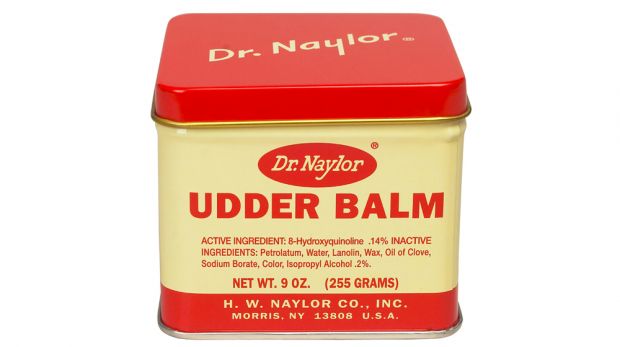How To Prevent And Treat Chafing
If you’re a runner or cyclist, chances are you’ve experienced chafing. Here’s how to end the misery of too much skin on skin
Our friends at Wikipedia define chafing as “the irritation of skin caused by repetitive friction, usually generated through skin-to-skin contact of multiple body parts”. But this dry description only airily waves a hand in the direction of what an absolute bastard this phenomenon is.
The bane of marathon runners and sofa surfers alike, it’s essentially one aspect of your body’s defence mechanisms working against the rest of you. When you exercise, your body heats up, and you sweat to cool yourself down. This brings salts and minerals to the top layer of the skin, which add to the already natural friction between your skin and whatever it’s touching, and irritate the tiny tears in your skin this leads to. The longer this goes on, the deeper these tears go, the more pain you feel. So be careful out there.
How To Prevent Chafing
1. Avoid cotton
Cotton absorbs your sweat, making it damp, which means it sticks to your skin, booking you a ticket to Chafe City. It’s best to stick to synthetic fabrics that won’t absorb moisture. Wool is also to be avoided, but if you’re running in woollen pants, you’ve got bigger problems than chafing, friend.
RECOMMENDED: The Best Men’s Running Gear
2. Lubricate
You can get ahead of any potential chafing by applying petroleum jelly, or something similar, to vulnerable areas like your inner thighs. If your nipples cause problems, they can be lubed up, or some people like to cover them with tape. Zinc oxide is a good idea, too.
3. Be Careful Down The Gym
This one’s pretty self-explanatory – if you get a bit carried away and over-develop a muscle group beyond what your body shape can realistically accommodate, you’re asking it to rub against another part. And you know what that means.
4. Go Beast Mode

Some runners swear by “udder balm” (originally designed to ease the milking of cows, latterly adopted to soothe the agony of breast feeding), finding it far more effective than products that aren’t formulated for livestock. Whether you want your children to look into the eyes of someone who’s applied udder balm to their intimate areas, we’ll leave up to you.
Get the Coach Newsletter
Sign up for workout ideas, training advice, reviews of the latest gear and more.
5. Drink Up
This one’s pretty obvious – if you stay hydrated, the easier your body will find it to perspire, which in turn will help to prevent chafing. If you’re less hydrated, there’s more salt in your sweat too, which, as you’ve learned, won’t help.
6. Talcum powder
Talc has largely gone the way of old ladies wearing headscarves and people stopping at red lights, but let’s not write it off just yet: it’s just as effective as petroleum jelly, and will leave you smelling nice and fresh, too. Heck, you can use olive oil if you like.
7. Wear Seamless Activewear
The rough seams on some gear can be chafing culprits; you should steer clear of stash that has too many seams and especially ones where the inner stitching is especially prominent. You may as well put razor blades down your shorts.
8. Wear Compression Layers
The boffins of the sportswear industry are beavering away to preserve your comfort. You want a compression layer on your shorts that’ll help sweat evaporate, or failing that, a separate base layer under your shorts.
RECOMMENDED: The Best Men’s Running Shorts
9. Let It Flow
Think of your running gear as like the porridge Goldilocks was into – it needs to be loose enough to allow air to flow, but tight enough so loose fabric doesn’t have the freedom to rub and chafe you. You want it just right, and only you can tell this.
10. Shed The Pounds
Coach has little truck with the body shamers, but the sad reality is that if you’re carrying a little extra weight, it’s more likely that your skin will rub together, making chafing more likely.
Treatments: What To Do When Chafing Strikes
1. Clean Up
First, it’s a priority to get the affected area clean – if your chafing is particularly bad, there is a small risk of it becoming infected thanks to vulnerable areas often also hosting the hot, wet conditions bacteria consider prime residential real estate.
2. Lube Up
To prevent things from getting worse and to give your skin an opportunity to heal, it’s a good idea to get some petroleum jelly and apply it to your chafed parts to avoid further abrasion. Or, you know, any other lubricating substance you may happen to have in the house.
3. Give It Time
There’s no real way of curing chafing – you just need to wait it out. It’s a good idea to wear soft, breathable fabrics and to avoid washing with soaps from the harsher end of your shelf. Severe cases should be covered with a sterile bandage.
4. If It Gets Bad…
Sometimes the worst can happen and things can get infected. Congratulations, you essentially have thrush. The good news is, a quick trip to your doctor and you’re sorted – there are medicated creams that will sort you right out.









